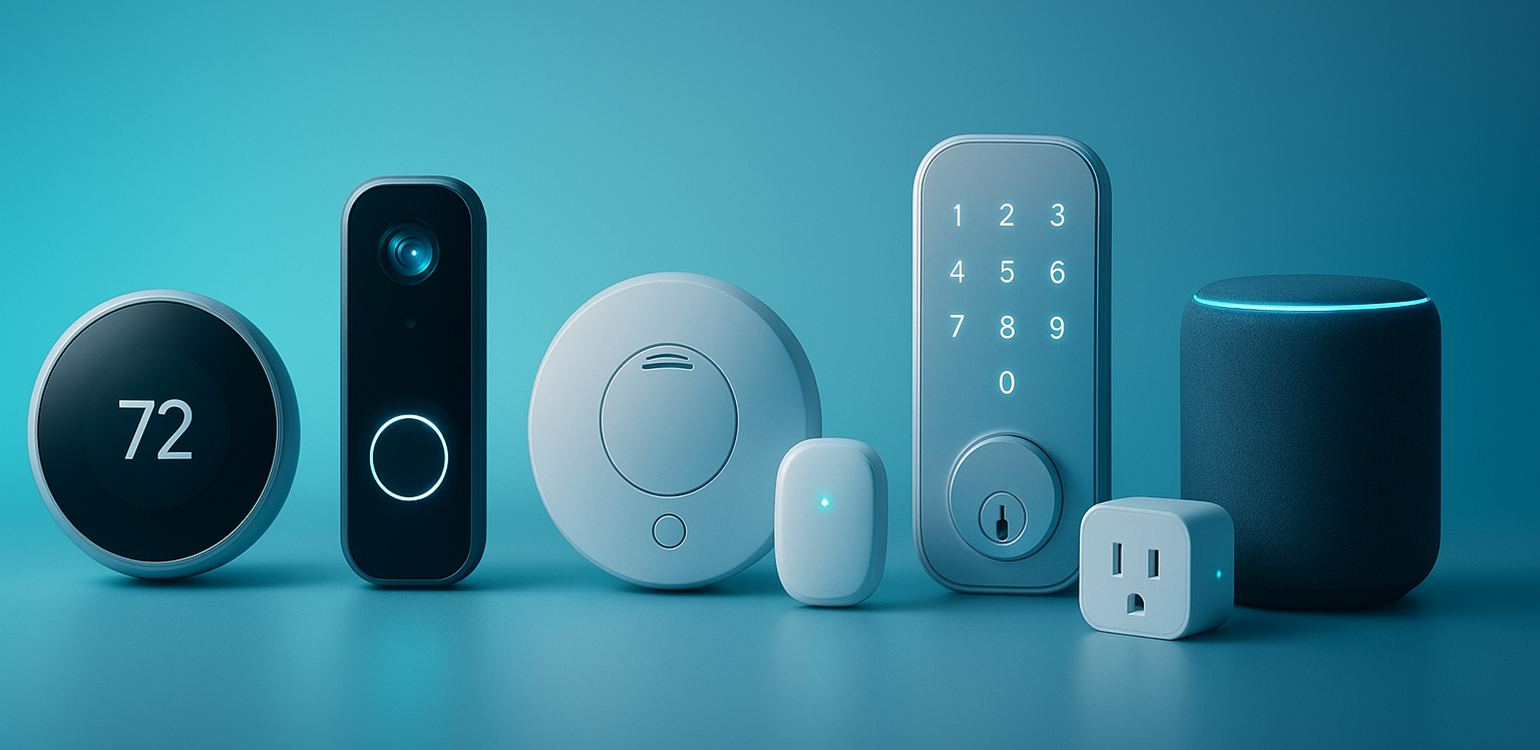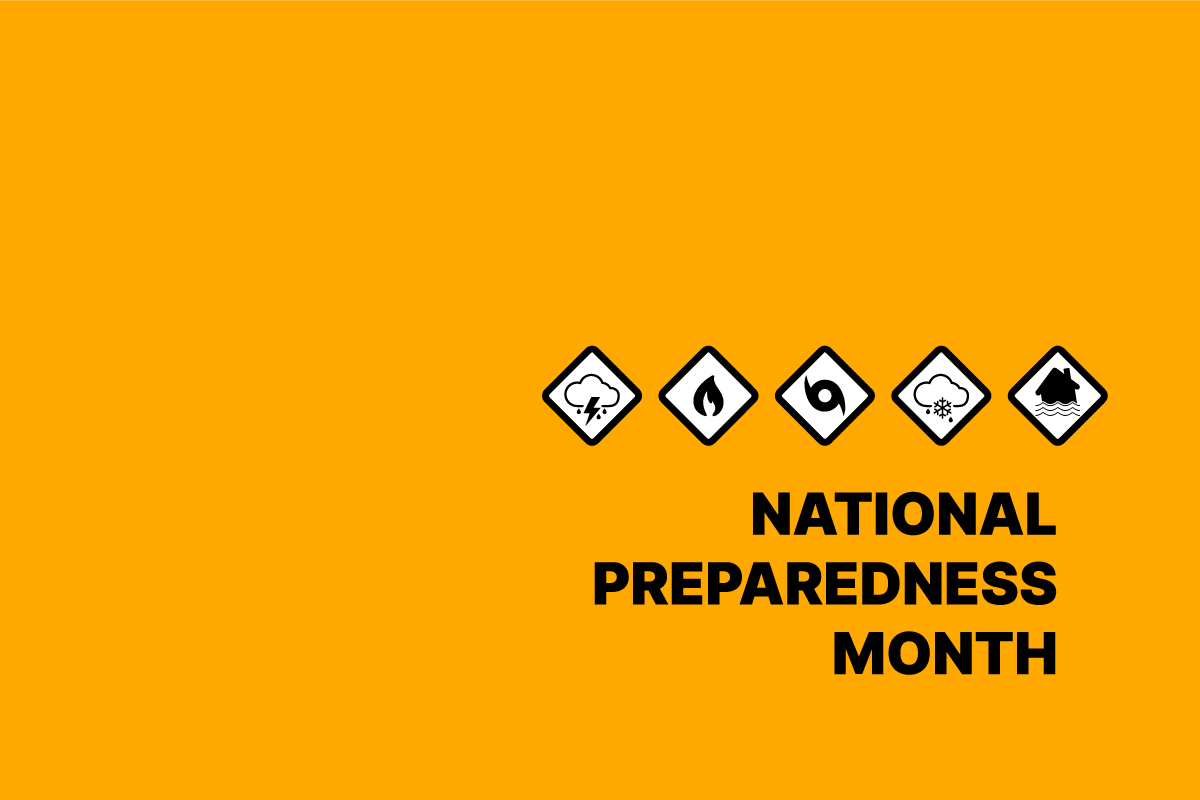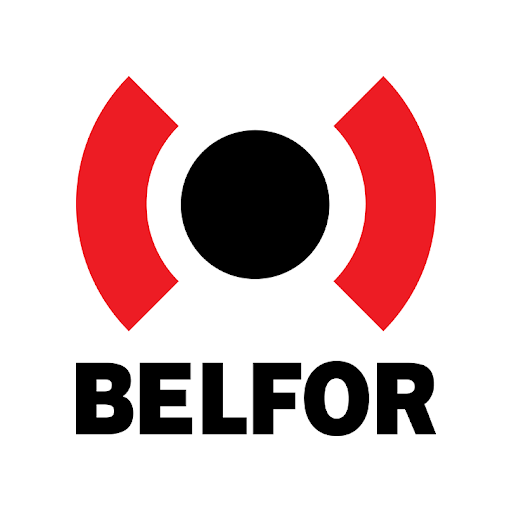Natural disasters in the U.S. are becoming more frequent and costly, with 2024 experiencing 27 billion-dollar natural disaster events. Disaster preparedness has evolved far beyond sandbags, canned food, and flashlights. Today, smart sensors, automation, and digital communication systems empower homeowners to act faster, stay connected, and protect property even when away.
But how can you fortify your home against the unexpected with the best smart home devices? For insights in advance of National Preparedness Month, we spoke with the following experts:
Bob Marshall, CEO, Whisker Labs
Daniel Kilburn, Founder, Emergency Action Planning LLC
Kyle Raabe, President of Consumer Power, Generac Power Systems
Merrick Lackner, CEO and Co-Founder, Rently
Paul Lambert, Founder and CEO, Quilt
Sheldon Yellen, star of the award-winning show Hearts of Heroes on ABC and CEO of BELFOR Property Restoration
Smart Devices That Keep Your Home Safe
 Smart home technology is now a powerful tool for mitigating disaster risks and providing peace of mind for homeowners. As Kilburn explains, "Smart home technology functions as a useful disaster preparedness tool, and it needs to work with the complete family emergency plan. Technology should enhance decision-making, not replace it."
Smart home technology is now a powerful tool for mitigating disaster risks and providing peace of mind for homeowners. As Kilburn explains, "Smart home technology functions as a useful disaster preparedness tool, and it needs to work with the complete family emergency plan. Technology should enhance decision-making, not replace it."
Disasters are an unfortunate part of life, but the way you prepare yourself and your home can make a huge difference when the time comes. The goal of smart technology is to make your life easier, so when looking to plan for a disaster, look for devices that help mitigate damage before they could even happens.
With that in mind, let's explore some essential smart home solutions for disaster preparedness:
Water Damage and Flooding
Flood-prone states like Louisiana, Florida, and Texas face significant risks each year. Smart technology can provide a crucial line of defense against the devastating effects of water damage.
Smart Leak Detectors
What it does: These small, wireless gadgets are placed in areas prone to water leaks, such as under sinks, near water heaters, or in basements. They detect moisture on contact.
Disaster-readiness function: They send instant alerts and notifications to your smartphone when water is detected, allowing you to act quickly to prevent or minimize damage, whether you're home or away.
Automatic Shut-Off Valves
What it does: These devices are installed on your main water line and can be triggered manually or automatically by a connected leak sensor.
Disaster-readiness function: They automatically shut off the water supply to the house, preventing catastrophic flooding from a burst pipe or a major leak during a storm or plumbing failure.
Humidity Sensors
What it does: These sensors monitor the humidity levels in a room, often integrated into smart thermostats or standalone devices. Some smaller sensors might use Bluetooth for local communication with a hub, in addition to Wi-Fi.
Disaster-readiness function: They can help prevent mold and mildew growth after a flood or leak by triggering a connected dehumidifier, which is crucial for long-term home health.
Smart Sump Pumps and Smart Water Flow Monitors
What they do: Smart sump pumps can be monitored and controlled remotely, while smart water flow monitors track the water usage in your home.
Disaster-readiness function: They provide alerts if the pump is failing or if there is unusual water flow, signaling a potential leak or flood risk.
Fire and Gas Hazards
Smart technology offers invaluable early warning and mitigation systems for homeowners concerned with household fires and gas leaks, as well as those in wildfire-prone states like California, Arizona, and Colorado.
Smart Electrical Monitoring
What it does: Devices that plug into an outlet can continuously monitor a home's electrical network for hidden faults. Marshall states that one of the most important priorities for homeowners is "gaining preventative insights" and that smart devices should help prevent disasters.
Disaster-readiness function: These devices send alerts to homeowners before faults can lead to an electrical fire. This preventative insight can also help prevent devastating wildfires caused by power grid problems, a critical benefit in fire-prone regions.
Smart Smoke/CO Alarms
What it does: These devices function like traditional smoke alarm and carbon monoxide alarms but also send alerts to your phone, email, or a monitoring service when smoke or carbon monoxide is detected.
Disaster-readiness function: They provide a critical early warning, allowing you to alert emergency services or family members even if you are not home.
Smart Natural Gas/Propane Detectors
What it does: These detectors sense the presence of dangerous gases like natural gas or propane in the air.
Disaster-readiness function: They alert you to a potential gas leak, enabling you to take action before it becomes a fire or explosion risk. Some systems can even be integrated to automatically shut off the gas line.
Smart HVAC Shut-Off Systems
What it does: These systems use smart home hubs or sensors to automatically shut down your HVAC system.
Disaster-readiness function: In the event of a fire, shutting down the HVAC system prevents smoke from circulating throughout the home, containing the damage and making it safer for first responders.
Backup and Energy Solutions for Smart Homes
As Lambert highlights, “Electric systems offer the strongest foundation for disaster resilience.” Accordingly, Raabe explains that a reliable backup power solution “should be at the center of any disaster-readiness plan” since smart home products depend on electricity to function. Smart generators with onboard Wi-Fi and monitoring features offer real-time alerts on their status, fuel levels, and maintenance schedules.
Storm preparation goes beyond having extra batteries for flashlights or bottles of water. Our homes are our safe havens, and creating a sense of safety and security during a storm comes with the ability to keep the lights on and your life powered. Developing a backup power plan for disaster scenarios is critical, especially as the U.S. has seen more weather-related power outages in the last decade.
Home Standby Generators
What it does: These generators are permanently installed and connected to your home's electrical system. They can power an entire home and automatically start when an outage is detected. Their load shedding technology—which allows a smaller unit to power your whole home by prioritizing essential systems—is a great feature to look for.
Disaster-readiness function: They provide continuous, automatic power for your entire home during an outage, ensuring critical systems and appliances, including medical equipment, remain operational without manual intervention.
Portable Generators
What it does: These units offer flexibility for on-the-go power during a disaster. They are useful for keeping specific emergency appliances running, such as a refrigerator to prevent food spoilage, a sump pump, or a furnace fan. They also offer a flexible power source for tools or recreational use when not in an emergency.
Disaster-readiness function: They provide a mobile and versatile power source for a selection of your most critical devices.
Portable Power Stations
What it does: This is the smallest and quietest option, making it ideal for apartments and condominiums to power specific devices like a laptop or a kitchen appliance.
Disaster-readiness function: They provide a small, easy-to-use power source for essential personal electronics, allowing you to stay connected and informed during an outage.
Home Battery Backup Systems
What it does: These systems store energy in large batteries, providing power to your home.
Disaster-readiness function: As Daniel Kilburn notes, these systems "with smart management for critical systems" are a viable option for keeping essential devices running during an outage. They provide instant, seamless backup power to your home.
Solar Panels with Battery Storage
What it does: When paired with a battery backup, solar panels can provide a clean and continuous source of power during an outage. They generate electricity during the day, and the battery stores it for use at night or on cloudy days.
Disaster-readiness function: They offer a resilient solution for long-term power independence during extended outages, using a renewable source to keep your critical systems running.
Power Outages and Temperature Control
The U.S. has seen an increase in weather-related power outages, with Climate Central reporting that the average annual number of these events has increased by roughly 78% in the last decade compared to the 2000s, making a plan to deal with them essential. As Lambert points out, “extreme temperatures during heat waves and cold snaps can be just as dangerous as hurricanes or wildfires, having reliable climate control becomes essential for true disaster preparedness.”
Here are some smart devices that can help you manage your home during an outage and maintain a safe temperature:
Smart Thermostats
What it does: Smart thermostats and integrated HVAC systems allow you to monitor and control your home's climate remotely.
Disaster-readiness function: They can be used to set a "home-away" temperature to conserve energy from a backup power source. They also provide valuable data to help you understand your home's energy consumption.
Smart Freezers and Refrigerators
What they do: These appliances have sensors that monitor internal temperatures and can send alerts to your phone.
Disaster-readiness function: They prevent food spoilage during outages by notifying you when internal temperatures rise to unsafe levels, allowing you to take action before food needs to be thrown out.
Smart Plugs
What it does: These are adapters that go between an outlet and an appliance, allowing you to remotely control power to individual devices.
Disaster-readiness function: They are ideal for managing specific, low-power essential devices during an outage or for conserving backup power.
Security Devices and Emergency Access
In the aftermath of a disaster, security and access can become critical issues. Smart devices can help you monitor your property and manage access for first responders or family members. Lackner suggests choosing devices that "integrate easily, have backup power, and can be managed from a single platform so you are not juggling multiple apps when every second matters."
Home Security System
What it does: A home security system often includes a combination of smart locks, security cameras, motion sensors, and an alarm system all managed through a central hub. It can also integrate with popular smart speakers like Google Nest or Alexa devices for seamless control and alerts and voice commands.
Disaster-readiness function: This integrated system provides comprehensive protection, enabling remote monitoring of the entire home and sending alerts for unauthorized entry or break-ins, even during a disaster.
Smart Security Cameras
What it does: These cameras provide a live feed of your home and send alerts for motion detection. Smart displays like Google Nest Hubs or Amazon Echo Shows can show you live camera feeds or be used to manage the security system.
Disaster-readiness function: They allow you to remotely monitor your property and ensure its security, even when you're evacuated. A camera with night vision capabilities, can be a key feature that enhances disaster-readiness function, as it allows monitoring even in low-light or power outage conditions.
Video Doorbell
What it does: A smart doorbell allows you to see, hear, and speak to visitors at your front door from your smartphone.
Disaster-readiness function: It provides a critical way to monitor activity at your entrance, allowing you to see who is approaching your home when you're away or to communicate with first responders or neighbors from a safe location.
Smart Lights
What it does: These smart light bulbs and switches allow you to turn lights on or off from your phone, by automations (e.g., set schedules) or activated by motion sensors.
Disaster-readiness function: You can activate lights remotely to make it look like someone is home, which can help deter potential looters during an evacuation.
Smart Door Locks
What it does: Smart locks allow you to lock and unlock door locks remotely and grant temporary access to others.
Disaster-readiness function: They enable you to provide temporary access to emergency services or trusted family members who may need to check on your home while you're away. As Lackner points out, smart locks allow "emergency personnel to get inside quickly and securely without causing damage."
Smart Garage Door Openers
What it does: These devices allow you to open and close your garage door from your phone.
Disaster-readiness function: They let you confirm that your garage is secure during a storm or evacuation. You can also open it remotely for trusted friends or family to retrieve items or secure the property.
The Human Element: Staying Prepared
As natural disasters grow in frequency and intensity, disaster preparedness must evolve beyond traditional tools. Smart technology is a powerful asset that turns homes from "passive structures into responsive, resilient systems that actively protect families," according to Lambert. Smart home technology can provide early warnings and real-time control in moments when every second counts. As Yellen describes it, smart technology is "a powerful tool in disaster preparedness, but it works best when paired with trusted resources." For homeowners in disaster-prone areas, smart appliances are no longer a luxury, they can be a critical component of a resilient home. With the right mix of sensors, automation, and backup power, your home can go from vulnerable to well-protected, even when you’re not there.
Ultimately, technology is only as effective as the overall strategy, planning and preparation behind it. Kilburn wisely points out, "Your smart technology should function as an assistant, a tool in your preparedness strategy rather than taking control of your plan."
Beyond the technology, your disaster readiness plan should include:
Identifying safe zones within your home
Knowing your family's evacuation routes
Having a comprehensive emergency kit with food, water, first aid, and power banks
Ensuring every device has a manual backup system
Keeping important documents (IDs, insurance policies, deeds, medical records) in a waterproof/fireproof case and digital copies stored securely
Preparing a go-bag with clothing, hygiene items, cash, and essentials for quick evacuation
Signing up for local emergency alerts and keeping a printed list of emergency contacts
Practicing family drills to make sure everyone knows their role in an emergency
Coordinating with neighbors or community members, especially the elderly or vulnerable
Reviewing and updating your plan and supplies every 6–12 months
While new technology is essential, tools like a NOAA weather radio remain invaluable for receiving life-saving alerts when power and internet are down. These technologies and others can help ensure you’re informed, connected, and ready to respond before disasters strike.
By combining the power of modern technology with a well-thought-out family emergency plan, you can create a safer, more resilient home.
Financial Preparedness: it's also essential to protect your finances and assets. Review your homeowners insurance policy to ensure it includes coverage for natural disasters common to your area, such as flood or earthquake insurance. Having a financial safety net is a critical part of a complete disaster-readiness plan.
Don’t Forget the Basics: Even the smartest home needs a backup plan. Keep cash on hand, learn how to shut off your gas and water manually, and store water purification tablets or filters. Smart tech enhances preparedness, but old-school skills still matter.
Official U.S. Disaster Preparedness Resources
Federal Emergency Management Agency (FEMA): The primary resource for disaster preparedness and recovery, offering comprehensive guides on how to build emergency kits and create a family communication plan through its public-facing site, Ready.gov. The free FEMA App provides weather alerts, safety tips, and information on locating open shelters.
National Weather Service (NWS): A division of NOAA that provides up-to-date weather forecasts, warnings, and alerts. Local NWS office websites offer detailed, localized forecasts. The NOAA Weather Radio is invaluable for receiving life-saving alerts when power and internet are down.
Cybersecurity and Infrastructure Security Agency (CISA): Provides guidance on cybersecurity best practices for homeowners, with tips on how to secure your network and protect your smart home systems from cyber threats.
U.S. Environmental Protection Agency (EPA): Offers critical information on handling environmental hazards, such as floodwaters, mold, and other contaminants, that can affect your home during and after a disaster.
Irena is an industry analyst and financial content specialist at Fixr.com, where she transforms complex data into clear insights to help homeowners make smarter financial decisions. With a background in personal finance research and writing since 2018, she brings years of experience in helping readers understand how to maximize their home investments. Her work has been featured on reputable websites, including Washington Examiner, Yahoo Finance, Fox40, and Forbes.




